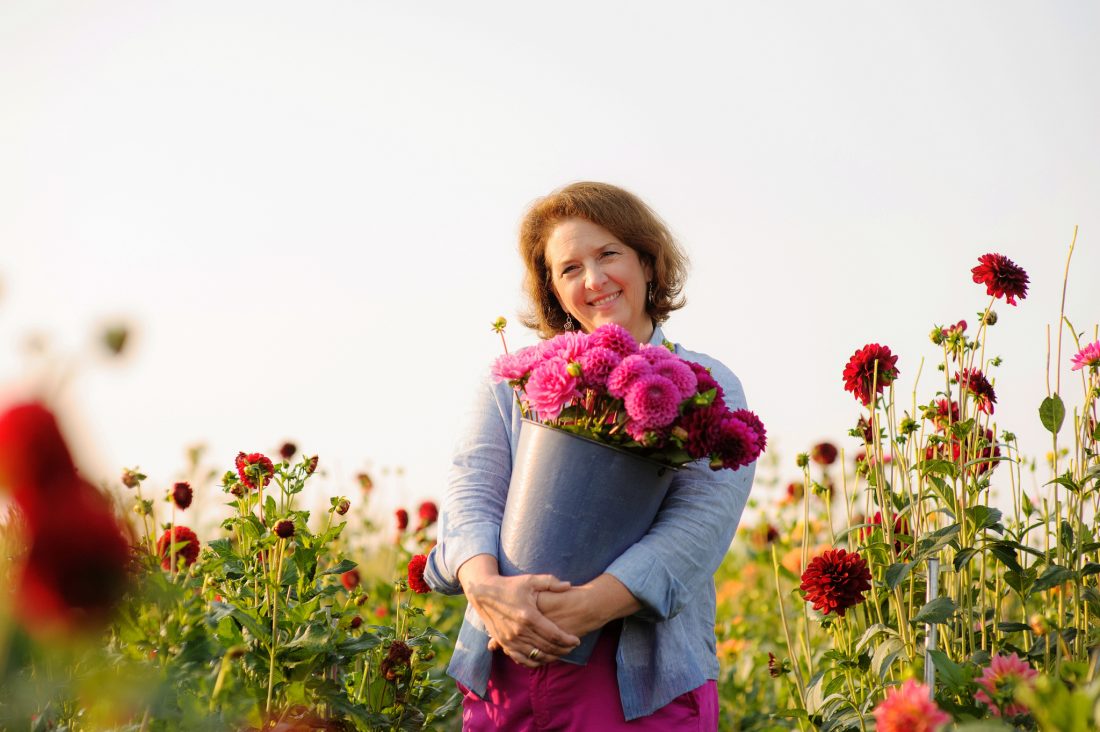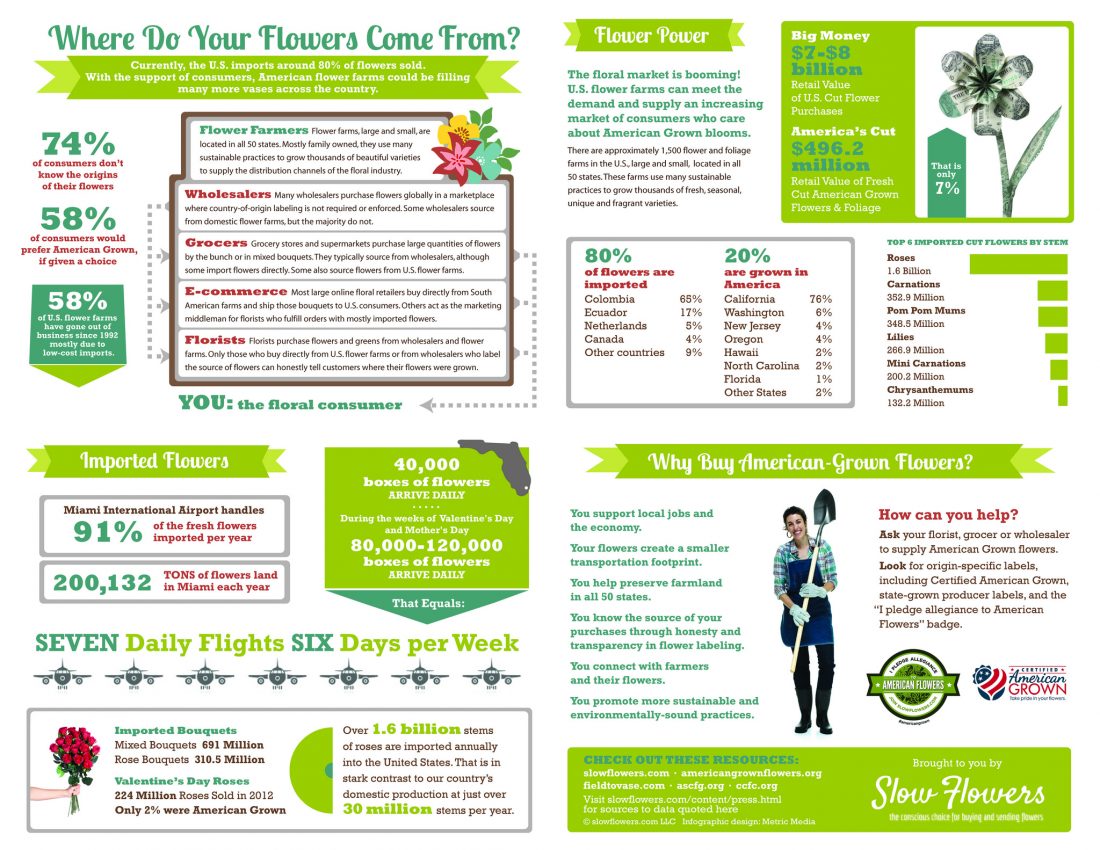
GUEST POST
Every woman loves it when her sweetheart brings home a surprise bouquet of flowers, right? That is, unless you’re me. My husband is terrified of presenting me with a bunch of blooms because the first thing I’ll say (after ‘thank you’) is: Where were these grown?
I wasn’t always obsessed with knowing the origins of the flowers I put in my vases. For one thing, I’m a lifelong gardener who enjoys clipping backyard blooms and bringing them indoors. Those flower-filled mason jars on my windowsill are pretty sweet, even in wintertime!
But then, in 2006, I met several cut flower farmers, in my community and across the U.S. I became enthralled with their efforts to save America’s flowers, to fight their way back into the floral marketplace, and to use sustainable practices while doing so.
You may be as shocked as I was to learn that 80 percent of cut flowers sold in the U.S. are imported from other countries. That’s right. A perishable product, one that some would argue is actually a consumer “luxury,” is put on a jumbo jet and shipped from South America to Miami. Then it’s loaded onto a truck to travel cross-country before reaching the corner flower shop or supermarket in your town. I don’t think I’m the only one who views this as slightly insane.
But the sad fact is that most of us do NOT know where our flowers come from. In a national survey, the California Cut Flower Commission recently asked: “Do you know where your flowers come from?” And 78 percent of respondents said “No.”
The follow-up question asked: “If given a choice, would you buy American-grown flowers?” More than half of consumers (58 percent) said “Yes.”
The big challenge is to shrink the gaping difference between what people know and what they want — to connect with a domestic source for flowers.
There are approximately 1,500 American flower farms, large and small, in all 50 states, producing fresh, beautiful, seasonal and fragrant blooms. How do we (and our florists) find those flowers?
Up until now, there has not been a reliable way to do so unless we visit a U-pick farm or farmers’ market. When we do business face-to-face with the actual farmer who grows peonies, sunflowers, zinnias, dahlias, larkspur and roses, we can be confident of the source of those blooms.
But that’s a rarity that mostly happens at the peak of summer. Most of us likely order flowers online to send to a sister-in-law in a distant city or stop by a flower shop to pick up a hostess gift. How do we know whether those flowers are American grown?
That’s the question Slowflowers.com answers. I launched the free, nationwide, online directory to help people just like my husband find flowers with the assurance that those blooms are seasonal, local and domestic. To date, nearly 400 vendors are listed on the site, from wedding and event designers, to flower farmers who will ship your bouquet in eco-packaging (yes, that means there’s a carbon footprint, but it’s a lot shorter than flowers from another continent).
Each Slowflowers.com studio, designer, shop and farmer takes a pledge. The pledge is to be 100 percent transparent in telling you – the consumer – where the flowers you buy were grown and who grew them. And if they don’t know, they’ll tell you that, too.
Some amazing people have joined the Slowflowers.com site. Meet Michelle and Andrew Shackelford, owners of Perbellus Flower Farm in Cedar, Michigan. They produce a huge selection of flowers, herbs and produce, and maintain a seasonal CSA program for flower customers in their community.
According to Michelle, “we promise to never use non-organic pesticides, fertilizers, herbicides or fungicides on our farm. Our goal is to create a biodiverse farm full of beneficial wildlife and soil biology. We will work towards using the most sustainable and responsible farming practices such as composting, crop rotation, cover cropping and creating habitat for beneficial wildlife. Transparency is important to us so feel free to ask us questions or to set up a visit with us.”
Those are flowers I want to shove my nose into and inhale with the confidence that they’re fresh, local — and safe for me and the environment.
Debra Prinzing is a Seattle-based outdoor living expert, author of 10 books on gardening and landscape design, and the leading advocate for American grown flowers. She is the creator of Slowflowers.com, the free, online directory to American grown flowers, coast-to-coast.



Brava! Tell it like it is, Debra!